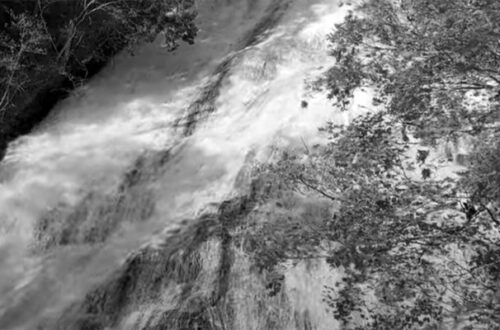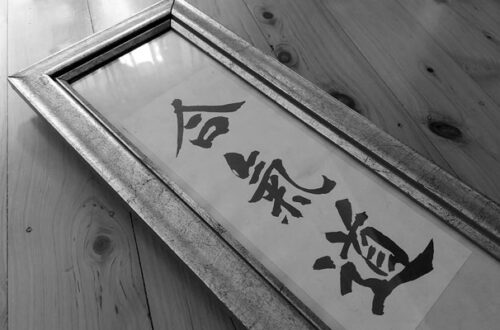
Morihei Ueshiba’s Path from Kenjutsu to Aiki-Ken (Part I)
The origin of Aiki-ken can be traced back to Morihei Ueshiba, the founder of Aikido, and his study of various martial arts styles throughout his life. Some of the major ken-related arts that Ueshiba had exposure to include Yagyu Shinkage Ryu 柳生新陰流, Yagyu Shingan Ryu 柳生心眼流, Daito Ryu 大東流, and Kashima Shinto Ryu 鹿島新当流.
In 1902, when Ueshiba was 19, he moved to Tokyo to start a stationery business but returned to Tanabe in less than a year due to a health problem. It was during this short period of time that he trained in Yagyu Shinkage Ryu, but it is unclear who his teacher was. Yagyu Shinkage Ryu was passed down by the Yagyu clan, although it was actually transmitted to Munetoshi Yagyu 柳生宗嚴 by Nobutsuna Kamiizumi 上泉信綱, the founder of Shinkage Ryu 新陰流 (without the Yagyu) in the 15th century. Kamiizumi is praised as one of the kensei 剣聖 (sword saints) in Japanese martial art history. Yagyu Shinkage Ryu originally consisted of an array of armed and unarmed combat techniques, but over time it evolved into a style focused primarily on kenjutsu. However, Ueshiba was also known to have learned other martial arts such as Kito Ryu 起倒流 and Tenjin Shinyo Ryu 天神真楊流 jujutsu during the same period of time. It is unclear how long Ueshiba had learned Yagyu Shinkage Ryu.
In 1903, Ueshiba entered military service, but he would visit and train with Masai Nakai 中井正勝, a master in Yagyu Shingan Ryu, during his days off. Yagyu Shingan Ryu was founded by Hayato Takenaga 竹永隼人. Takenaga had already learned many kenjutsu styles before he started learning the Edo line of Yagyu Shinkage Ryu. He received the gokui 奥義 (secret techniques) from Munenori Yagyu 柳生宗矩, the son of Munetoshi Yagyu. Takenaga later founded his own style, but kept the family name “Yagyu” in his style. In addition to taijutsu and kenjutsu, Yagyu Shingan Ryu also practiced other weapon skills such as bojutsu, iaijutsu, and naginatajutsu. Ueshiba learned from Nakai for the four years he served in the army until he was discharged in 1907. In 1908, Ueshiba received a menkyo 免許 (certificate) from Nakai.
It wasn’t until 1915 that Ueshiba met Sokaku Takeda 武田惣角, a master in Daito Ryu Aikijujtsu. Ueshiba was deeply impressed by Takeda and would learn from him for many years. Ueshiba even built a dojo at his home and invited Takeda to be a permanent house guest. The origin of Daito Ryu is a bit unclear. While there are no definitive records, it is claimed that Daito Ryu can be traced back to Minamoto no Yoshimitsu 源義光, a samurai of the Minamoto clan in the 11th century. It was developed on the battlefield where techniques were created through an understanding of the human body structure by dissecting the corpses on the field. It is widely accepted that today’s Aikido is largely influenced by Daito Ryu Aikijujtsu. In addition to Daito Ryu, Takeda was also believed to be proficient in Ono-ha Itto Ryu 小野派一刀流 and Jikishinkage Ryu 直心影流 kenjutsu. However, there is no record of Takeda teaching these kenjutsu to Ueshiba. It is said that Ueshiba received a Yagyu Shinkage Ryu menkyo from Takeda, however, the relationship between Takeda and Yagyu Shinkage Ryu is little known.
Author’s Note: We appreciate your readership! This article serves as a preliminary introduction to the subject matter. While we aim for accuracy, we cannot guarantee the content’s precision and it may contain elements of speculation. We strongly advise you to pursue additional research if this topic piques your interest. Begin your AikidoDiscovery adventure! 🙂




